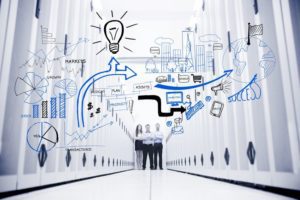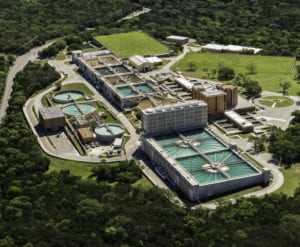For those who manage data centers, postponing technology upgrades and turning a blind eye to the need for modernization of aging hardware can be risky. Regardless if those data centers are on-premise, in the cloud, on the edge, or some hybrid combination of each, the rapid pace of market evolution necessitates constant reevaluation of data center asset viability. More specifically, the physical data center must adapt to the application portfolio that it supports. Some changes in applications have a profound effect on the IT equipment required and therefore how data centers are powered and cooled to support these new IT stacks. When modernization is neglected, data center performance and responsiveness are compromised.
Growing trends such as use of GPUs and the Internet of Things (IoT) accelerate the aging of data center physical infrastructure. Although the power and cooling equipment will still function, the increase of higher density compute and storage will compel modification and redesign to avoid downtime. Processing real-time data in large quantities places an exponential workload increase on the data center infrastructure. With the vast amount of data being produced, IT and network administrators are facing a new set of challenges. Improved analytics, security, and flexible capacity are needed. Higher power draws per square foot, for instance, produce zones of more concentrated heat. Accommodating such changes will require more thermal containment, more power, and the flexibility to move that power around.

Advice for prioritizing data center modernization efforts
When modernizing your data center design, consider those aspects of the data center that will impact performance and reliability the most:
- Emphasize scalability, security, and visibility to assets- Modern data centers must be able to scale quickly to handle the influx of data and provide powerful processing and AI capabilities for analysis—all while maintaining high availability. Customer data must be protected through a technology ecosystem that ensures a cyber and physically secure environment. Software as a Service (SaaS) based asset management products such as Schneider Electric’s EcoStruxure™ IT are popular for providing the needed asset visibility. Data center staff members simply view their smart phones for easy access to all the devices on the network. Alarms are bundled according to relevance, and are sent out every 5 minutes. From a dashboard, administrators can dive into any device or alarm and can immediately start troubleshooting if required.
- Redundancy and power protection considerations- Servers and systems within the data center requiring the highest levels of availability should be identified and configured to support longer runtime and higher levels of redundancy. They should also be placed in a separate area, and in separate racks. This concept of “targeted availability” helps increase the availability of critical systems without having to incur a large capital expense across the entire data center. Higher levels of redundancy like dual feeds all the way to the rack, with dual generators, and dual N+1 UPS should be considered for these highly-critical data centers and networks.
- Lean towards precision cooling and power density control- Machine learning and AI technology requires compute power that produces concentrated heat in the data center (i.e. hotspots). Therefore, sophisticated precision air cooling devices should be deployed and power loads closely monitored so that compute uptime can be maximized.
When modernizing also consider industry-specific requirements
The criticality of IT is increasing across industries. That means that IT and data center staffs need to be more aware not only of how physical infrastructure is being impacted by general technology trends but also by industry specific business transformation. In the retail industry, for instance, data centers have emerged as the heart of the connected retail enterprise. They process the thousands of transactions and orders that come in every day from storefronts, websites, warehouses, and regional and corporate headquarter offices. These data centers also enable omni-channel buying and house big data that tracks online and in-store trends and behaviors thereby driving the ultimate customer experience.
In healthcare electronic medical records make it essential for medical staff to have consistent, secure, quick access to the IT system. Such an application also requires reliable power for backup procedures and archiving. The rack systems, security, IT management software, and power and cooling within the data center that protect the servers and storage, are critical elements in supporting the medical records system uptime.
In finance, technology trends such as Banking 4.0 are driving a reevaluation of how data center architectures are being deployed. With “banking in the palm of your hand” becoming more the norm than the exception, enterprise data centers, many of whose infrastructure assets are 10 years old or even older, are having difficulty aligning technologies to adapt to changing marketplace needs.
Learn more about modernizing aging data center infrastructure
Across data center environments, companies like Schneider Electric have the global experience to advise and even provide reference designs for scalable, robust, and agile data centers that can respond to rapid marketplace changes. Such designs include solutions for data center power distribution and protection, precision cooling, and both on-site and remote management. To learn more, download white paper 272, A Framework for How to Modernize Data Center Facility Infrastructure.


